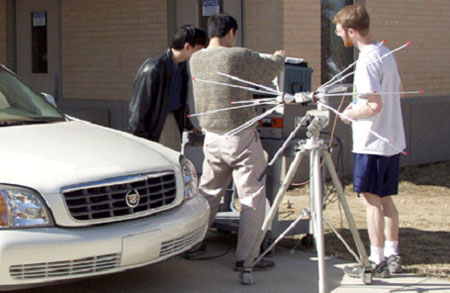|
Development of Numerical Modeling Codes for Solving EMC Problems
13/02/2014
| English
 Numerical electromagnetic modeling tools play an important role in most of the Missouri S&T EMC Laboratory research projects. Numerical models (supported by measured data) can provide insight into a problem that cannot be obtained by measurements alone. The laboratory uses a number of commercial modeling codes for modeling simple, well-understood geometries. However, researchers also develop their own modeling codes when necessary. Numerical electromagnetic modeling tools play an important role in most of the Missouri S&T EMC Laboratory research projects. Numerical models (supported by measured data) can provide insight into a problem that cannot be obtained by measurements alone. The laboratory uses a number of commercial modeling codes for modeling simple, well-understood geometries. However, researchers also develop their own modeling codes when necessary.There are three large numerical modeling codes that are under continuous development at Missouri S&T. One or more of these codes is applied to nearly every research project in the laboratory. The codes are named EMAP5, CEMPIE and APOGEE. EMAP5 is a 3D full-wave hybrid finite-element/moment-method code. It is used to model structures that include regions with a high level of complexity and regions with large resonant conductors (e.g. printed circuit boards with enclosures or cables). It is a frequency domain method. The finite element method and moment method parts can be employed independently if necessary. CEMPIE is a tool for efficiently modeling printed circuit board power bus structures. It's function is similar to a 2D PEEC tool. It reduces the power bus to an equivalent N-port network that can be analyzed using a circuit simulator such as SPICE. APOGEE is a 3D full-wave finite difference time domain (FDTD) code. It has been applied to everything from printed circuit board structures to entire systems. Subcellular algorithms have been developed that model thin wires and seams in enclosures. Table of contents
|
|
©ESMMC 2013 ESMMC including ESMMC Asia,ESMMC Europe,ESMMC America,ESMMC Africa,ESMMC Oceania.

